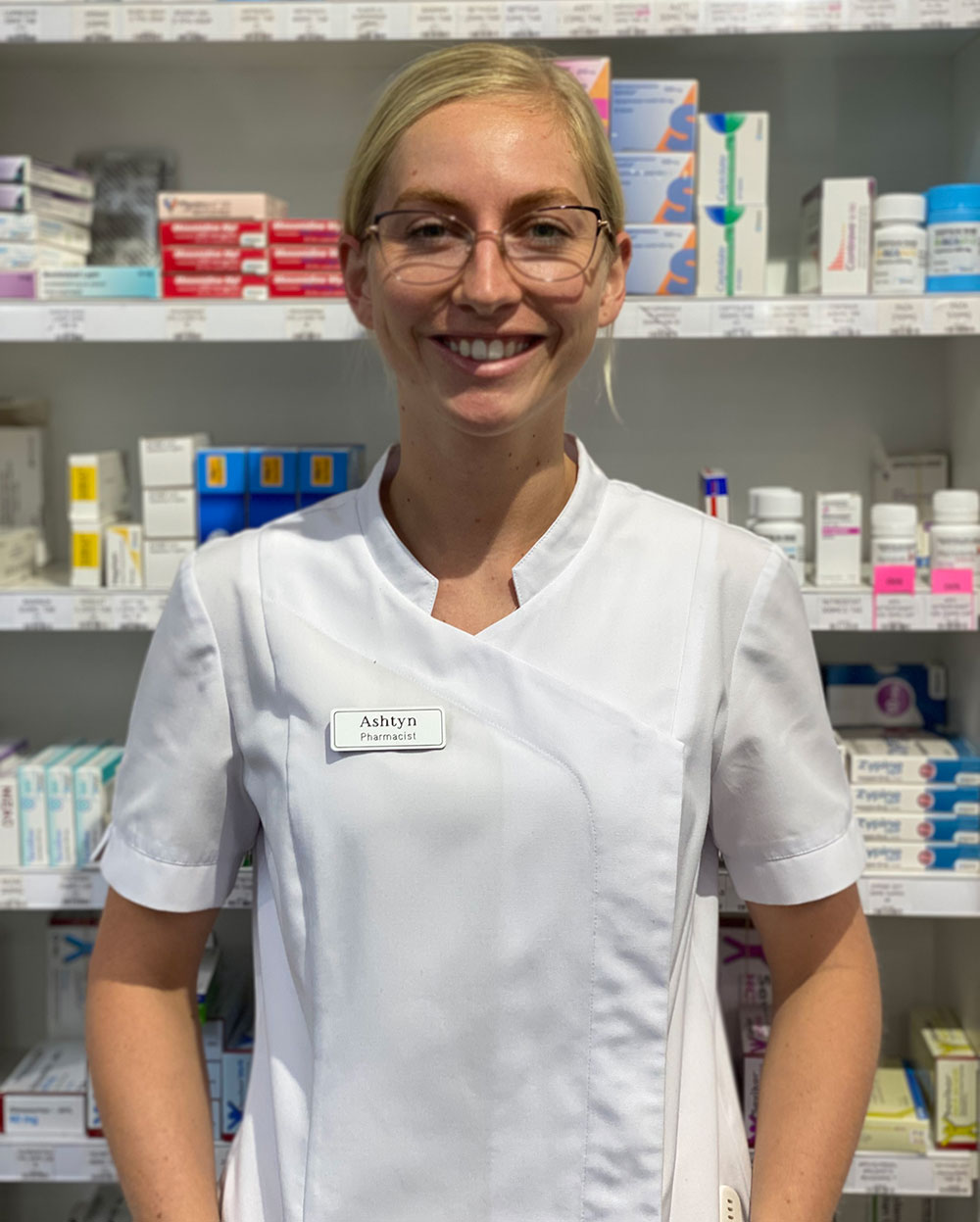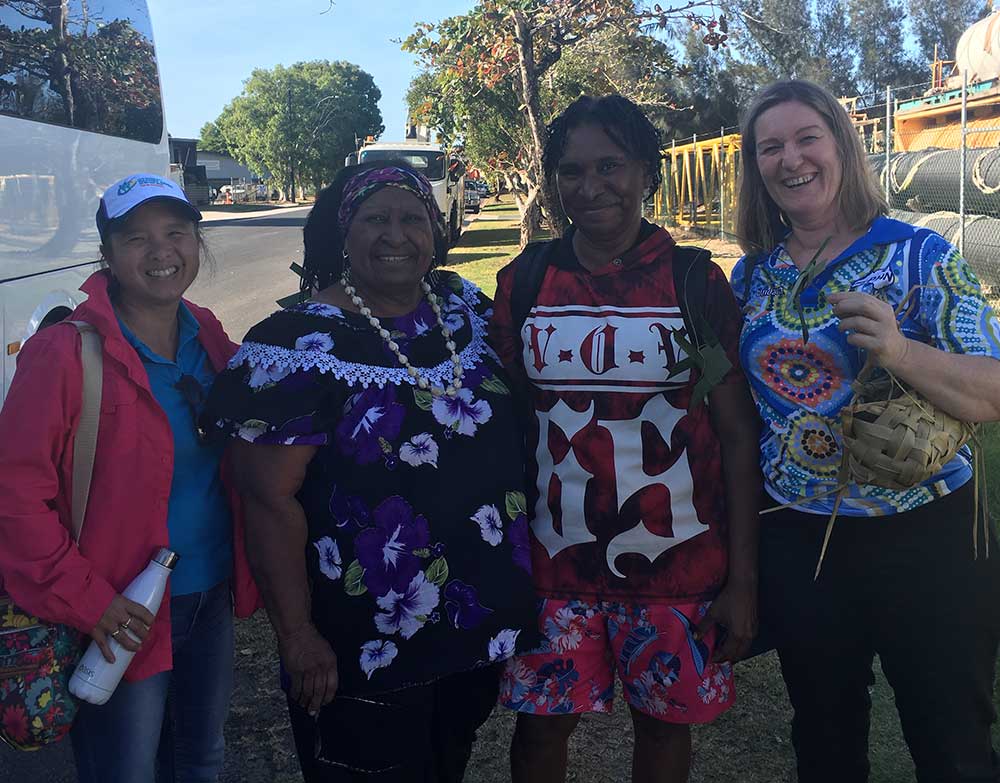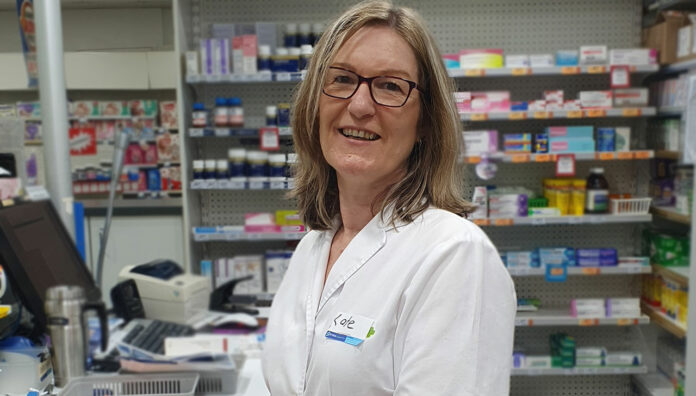To mark International Women’s Day on 8 March, two pharmacists discuss their careers and the biases that must be broken to ensure women can succeed.
Ashtyn Pitts MPS, community pharmacist and 2020 Western Australian Intern Pharmacist of the Year
Years in the profession: 3

I was in high school when I decided I wanted to be a pharmacist. I love the patient interaction and relationship building that come with community pharmacy.
Our regular patients ring us for advice about anything health related. As the most accessible healthcare professionals, pharmacists also have the opportunity to identify health issues that may be missed.
Some members of the older generation still see pharmacists as men, and are not used to young women in positions of power or offering health advice. But I’m confident in my knowledge as a young pharmacist.
When I was an intern, a patient in her mid-70s came in to fill a prescription. She looked pale, almost grey, and was breathing really deeply. I looked down at her ankles and saw they were swollen.
I told the patient she needed to go to hospital immediately. When I called to check on her that evening, it turned out she had a blood clot. Had it not been identified, she may not have lived another 48 hours.
Now that I am a pharmacist in charge, I use that story to explain to staff that if we notice things, we can’t brush them off.
Flexibility and changing perceptions
I’d like to run my own pharmacy one day. I’m interested in the benefits and flexibility that running your own business can bring.
Even if you’re not an owner, there are plenty of opportunities for pharmacists to work flexibly. For example, during school hours or every second Saturday.
‘We’re getting used to the idea that we’re good enough to be in charge.’
Ashtyn Pitts MPS
Women make up 63% of the pharmacy workforce in Australia, and with the 25–29 year age bracket the third largest cohort in the profession, there are plenty of female early career pharmacists.
Despite this, as young women we do still face bias.
When my boss came into the pharmacy recently, an older gentleman who I get along well with said to him, ‘I’m glad you’re here, I need to ask you something’. It was such a simple, over-the-counter question. As my boss said, some people are always going to be like that.
However, because of the sheer number of young female pharmacists, I do believe that the bias will shift. We’re ready to take on any challenge. We don’t pretend to know it all and we’re not afraid to ask for help. I often ring my more experienced colleagues for advice, but it goes both ways.
I’ve had older colleagues say, ‘You’re straight out of uni, you should know about this. What’s your opinion?’
We’re getting used to the idea that we’re good enough to be in charge and that pharmacy is not just a man’s thing.
Kate Gill MPS, consultant pharmacist, Cairns
Years in the profession: 20
I was a nurse for 17 years before I wanted a career change in my 30s. I always had a good relationship with the pharmacists I worked with at the hospital, so I decided to pursue pharmacy.
I undertook my pharmacy degree at Townsville University in 1999, meaning I had to travel back and forth from Cairns every week. That was hard, especially because my children were babies at that stage.
When I finished my degree, I started working in community pharmacy, which I loved far more than I thought I would.
There was a doctor’s surgery next door, and I liked working collaboratively with them and building relationships with patients.
About 12 years ago, I became an accredited pharmacist and branched out into Indigenous healthcare, which included working on the Integrating pharmacists into Aboriginal Community Controlled Health Services (IPAC) project at Wuchopperen.

Being part of the wider team to ensure patients received the best health outcomes was a career highlight. We had one patient who used a walker and had issues with housing. Instead of referring him to a wellbeing worker, psychologist or social worker in a report, I visited them individually. We set up a case study for the patient, which helped him acquire accommodation and a new walker.
I gradually shifted from community pharmacy to focus on medicine reviews, which I have done almost exclusively for the last 3 years.
Although Wuchopperen didn’t have the funding to keep me on post-IPAC, we remained in contact and now I provide home medicine reviews (HMRs) for them.
More support for accredited pharmacists
Career-wise, providing HMRs ticks a lot of boxes. I get to spend time with patients, build good relationships with doctors and work my own hours.
The recent follow-up provision for HMRs has been vital for accredited pharmacists. One patient, for example, who just came home from hospital was very confused about his medicine changes. I went through them on the first visit, and on the second, I checked that he still understood the changes and that he wasn’t experiencing any adverse effects.
In Cairns, most of the pharmacists I know who provide medicine reviews are women who are attracted to the flexibility it offers, but it is becoming less financially viable.
‘Career-wise, providing HMRs ticks a lot of boxes. I get to spend time with patients, build good relationships with doctors and work my own hours.’
Kate Gill MPS
Accredited pharmacists used to receive an initial payment of $1,500 and $750 annually thereafter to cover costs through the Medication Review Accreditation Incentives program.
But when that ceased in 2010, coupled with caps on the number of HMRs you could provide introduced in 2014, a lot of women I know didn’t become reaccredited. If you’re a sole trader providing HMRs as a job to fit in with a young family, it’s hard to make ends meet.
Medicine reviews are also becoming corporatised, with large organisations taking over nursing home contracts, biting into women’s bottom lines.
There should be more funding opportunities to help us maintain our accreditation so we can keep doing the important work we do.
I also think women should be offered more leadership or partnership roles. When I left community pharmacy 5 years ago, my boss asked what would have helped me stay.
I told him that despite talks of offering a male pharmacist partnership, it was never raised with me. His response was, ‘I didn’t think you were interested’.
It would be good for pharmacy owners to consider that female pharmacists are just as interested in becoming partners in their business.



 Dr Peter Tenni[/caption]
Dr Peter Tenni[/caption]
 How should we deprescribe gabapentinoids, according to the Maudsley Deprescribing Guidelines[/caption]
How should we deprescribe gabapentinoids, according to the Maudsley Deprescribing Guidelines[/caption]



 Pharmacists have always prescribed, but they have the potential to prescribe much more
Pharmacists have always prescribed, but they have the potential to prescribe much more





